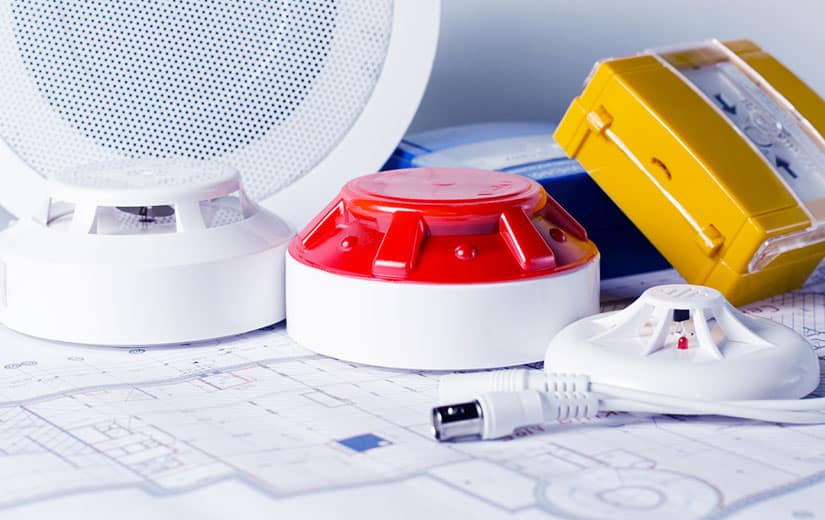A motion or presence detector watches for suspicious presence in your home, thus raising the level of security a notch. Focus on the essentials to know about this device which identifies moving bodies within its range of action.
Summary
Focus on presence and motion detectors
Motion and presence detectors use the same technology. The most commonly used is passive infrared technology. The difference between the two devices lies in the sensitivity.
The point on the motion detector
The motion detector performs a thermal measurement without taking into account the ambient light. He reacts to large variations in thermal radiation when an object or person moves. However, this device is not able to detect small variations. The activated signal automatically stops after a certain time if the machine does not detect any further movement. Do not hesitate to approach a sign specialized in the field if you wish to know more about the motion detector.
The presence detector
The presence detector is a more elaborate device which includes a thermal measurement, but also a continuous measurement of the ambient luminosity. The combination of motion detection and continuous light measurement (natural or artificial) determines whether the light should be switched on or not. Being more sensitive, they allow the detection of a new element that appears in the monitored area. As long as you are in the room, the lighting will be maintained. Presence sensors can be associated with push buttons. They are particularly useful for building managers, as they allow significant energy savings. Their field of application is currently no longer limited to controlling lighting, as they now control automation.
Operation and use of presence and motion detectors
The most commonly used motion or presence detectors operate using an infrared system. Devices that work in this way are not only reliable, but also marketed at an affordable price.
Operation of presence and motion detectors
The operating principle of a presence or movement detector is relatively simple. Infrared sensor measures thermal radiation which are emitted by the elements present in the detection zone of the device. The alarm associated with the detector will be activated by variations caused by an animal, person or object entering the detection field.
Uses of motion and presence detectors
Generally, the outdoor motion detector is reserved to trigger an audible signal in the event of suspicious movement or to illuminate access to a house or building. It is also used to open a garage door or gate. Indoor models are best suited for high traffic areas such as warehouses, hallways, workshops or stairways. The presence detector, for its part, allows several settings and can be used for an anti-intrusion system as well as for home automation. When combined with home automation functions, this device is suitable for interior spaces where daylight changes when people are present. It has its place in a meeting or conference room, in a bathroom, in a reception area, in a business or in a living room.
Choosing and installing a presence detector
Having a presence detector in your home helps prevent burglaries or intrusions. This sensor is also often installed in security systems for the protection of passage areas or a specific place. Depending on the systems, it can be placed on the ceiling or on the wall. For the ceiling, the detector must have a radius of action of 360 °, while a wall model can be satisfied with a reduced angle.
Our advice for choosing the right presence detector
Knowing that most devices use infrared, you can choose from two types of presence detectors: active and passive. An active IR detector emits a beam which, once cut, gives the alert. This barrier is useful for securing a row of windows using a single detector. A passive IR model, on the other hand, reacts to variations and measures the IR radiation emitted by the elements present thanks to sensitive facets. The accuracy of the detector varies according to the number of facets. When making your choice, start by determining its function. If it is connected to an alarm system, it is often offered in a complete pack. Also favor a device that will blend easily into the decor to harmonize with your decoration. Ideally, opt for a wireless reference that communicates by radio waves and which is powered by a battery.
Selection criteria
Several criteria should guide your choice of presence detector. Consider the detection angle, signal range, battery life, power supply type, and auto photo option. In addition to the presence of a pulse counter, also consider the automatic disarming function. For a device intended for outdoor use, focus on the level of protection against vandalism or bad weather.
Installation and advantages of a presence detector
A presence detector undeniably contributes to protecting your home from intrusions. The installation of this device must be carried out so as to cover the entire space to be monitored. Once you have identified the location, simply unplug the electricity meter, then place the device in the wall using suitable dowels. Then connect the stripped electrical wires to it, then carry out a test when the device is set. This operation does not require the intervention of a professional if you have good knowledge of electricity. Also consider the presence of pets if you have any to avoid false triggering. Note that the latest generation wireless detectors are able to differentiate harmless movements from those of humans and animals.






